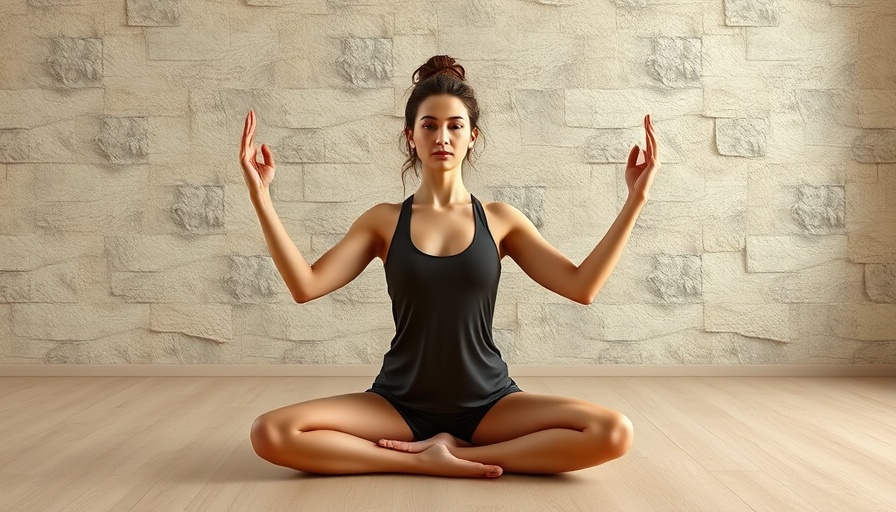
Understanding the Connection Between Yoga and Digestive Health
Yoga is often touted for its physical health benefits, but its mental and emotional advantages are frequently overlooked, especially in relation to digestive health. Those suffering from constipation can experience not just physical discomfort but also emotional stress and anxiety, which can exacerbate their condition. Incorporating yoga into daily routines can provide holistic relief not just for the body but also for the mind.
6 Yoga Poses for Effective Constipation Relief
Practicing specific yoga poses has been shown to relieve constipation effectively while enhancing overall digestive health and well-being. Here are six essential poses that can help ease discomfort:
- Child's Pose (Balasana): This pose helps relax the body and calms the mind. By gently stretching the lower back, it promotes digestion and improves blood flow to the pelvis.
- Cat-Cow Stretch (Marjaryasana and Bitilasana): Combining these two poses creates gentle movements that stimulate the digestive organs and encourage intestinal motion.
- Downward-Facing Dog (Adho Mukha Svanasana): This pose allows for stretching and compressing the abdominal region, potentially easing discomfort and promoting the urge to relieve oneself.
- Knees-to-Chest Pose (Apanasana): By bringing the knees toward the chest, this pose puts pressure on the abdomen, which can help release any trapped gas and stimulate bowel movements.
- Seated Forward Bend (Paschimottanasana): This pose encourages a gentle compression of the abdomen while stretching the spine. It aids in relaxation and encourages the bowels to function just right.
- Pigeon Pose (Eka Pada Rajakapotasana): A deep stretch for the hips, this pose can alleviate tension and improve your flexibility, indirectly impacting digestion positively.
Benefits Beyond Relief: The Holistic Approach of Yoga
While constipation relief is significant, the broader benefits of practicing yoga cannot be ignored. Regular practice can:
- Boost Mood: The mental clarity and emotional balance brought about through yoga can reduce anxiety levels that contribute to gastrointestinal issues.
- Enhance Sleep Quality: Better sleep often follows a proper yoga regimen, improving overall health and promoting a well-functioning digestive system.
- Promote Mindfulness: Engaging with yoga encourages being attuned to your body, which is crucial for recognizing when regularity is off and developing a responsive practice.
- Support Core Strengthening: A strong core supports overall health. According to a study from the Journal of Physical Education, strong abdominal muscles contribute directly to enhanced digestion.
Common Misconceptions About Yoga and Digestion
Many believe yoga is too gentle to have tangible effects on constipation, but the reality is that the active movements in combination with deep breathing techniques do stimulate the digestive process. Far from being a mere relaxation tool, yoga can combat constipation effectively when practiced consistently.
Your Journey to Digestive Wellness
This new understanding of yoga's impact on digestive health reveals that its integration into daily life can serve as a preventive measure and a response to existing issues. The practice of these poses not only relieves constipation but can also enrich your overall quality of life.
Getting Started with Yoga: Practical Tips
If this is your first introduction to yoga, starting with gentle sessions or joining guided classes can help ease you into the practice. Utilizing online resources or community classes can enhance your understanding and experience. Always remember to take note of how your body feels; adjustments may be necessary for individual comfort and safety.
By incorporating regular yoga practice into your routine, you can navigate successfully toward achieving digestive wellness while enhancing your mental and emotional health. Recognizing the links between movement, mindfulness, and bodily functions opens the door to a healthier lifestyle.
Ready to embrace yoga for better health? Find classes nearby, start watching online tutorials, or even seek out personal trainers specializing in yoga. Your body will show gratitude in return.
 Add Row
Add Row  Add
Add 




Write A Comment